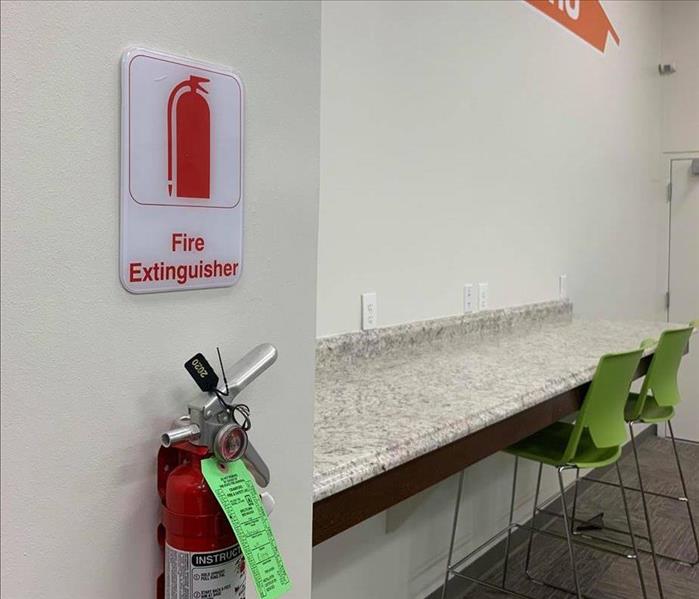How to Use a Fire Extinguisher: the PASS Method
8/11/2021 (Permalink)
U.S. fire departments responded to an estimated average of 353,100 home structure fires per year from 2014 to 2018 according to the National Fire Protection Association’s Home Structure Fires report from November 2020. Most of which were caused by cooking, heating equipment, and electrical or lighting issues. Being wholly prepared for a home fire means creating and practicing your fire escape plan, knowing fire safety tips to prevent a fire, and understanding how and when you should use a fire extinguisher to suppress the flames.
The PASS acronym was created to simplify how to safely use a fire extinguisher.
PASS – Pull, Aim, Squeeze & Sweep
Pull – Maintaining control of the nozzle, pull the pin at the top of the extinguisher.
Aim – Stand back from the flames. With one hand, aim the nozzle at the base of the fire.
Squeeze – Firmly squeeze the nozzle with your other hand.
Sweep – Quickly contain the fire by making a sweeping motion with the nozzle.
Only utilize a fire extinguisher on a small fire. Never attempt to suppress a massive fire. If the fire seems too big for a fire extinguisher to suppress, then quickly get outside and call your local fire department for help.
Every home should have fire extinguishers in kitchens, in workspaces or garages, and at least one for each level. Be sure to read the fire extinguisher label to know which class of fire it is meant to put out. And according to firefighterinsiders.com, “you can use a fire extinguisher more than once, as long as it is not damaged or expired, but it must be recharged between uses. It is important to check the label of the fire extinguisher, so you know if the one you have is reusable or not”.
After the fire is extinguished, our team is here to help with cleanup and restoration. SERVPRO of Greater Covington and Mandeville’s fire restoration team has the experience and knowledge to make fire damage not only look “Like it never even happened,” but smell like it too. Contact our office for more information about our fire restoration process.






 24/7 Emergency Service
24/7 Emergency Service
